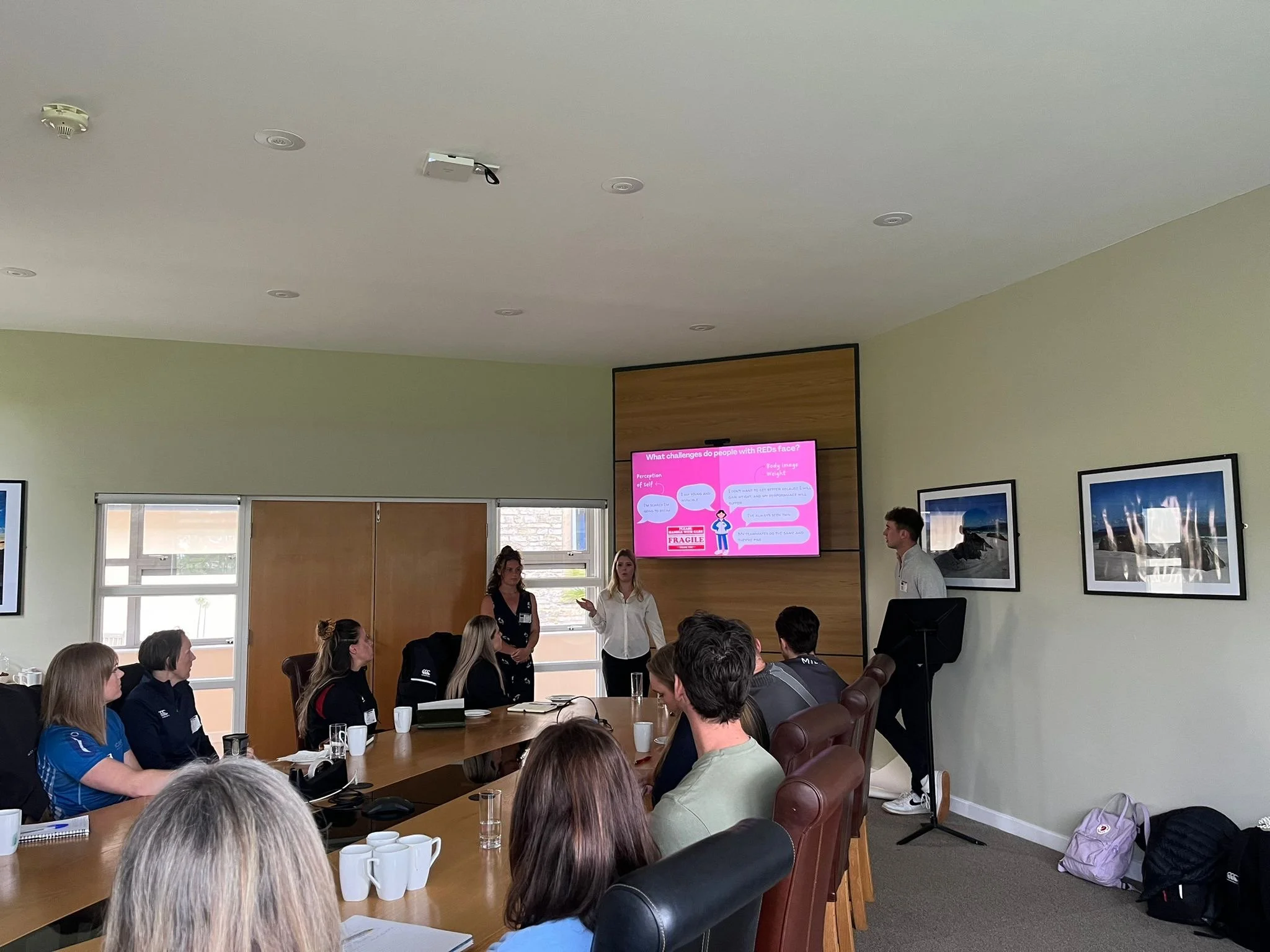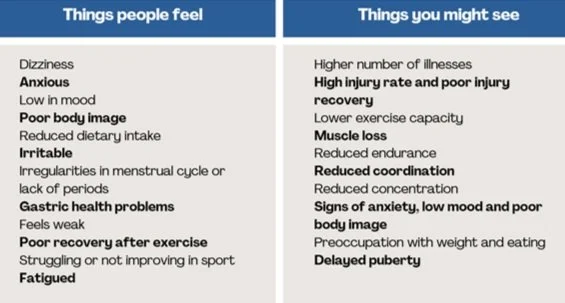
Why might you get REDs?
Relative Energy Deficiency in Sport (REDs) is most commonly seen in people taking part in lots of sporting activity. The most common cause of REDs is prolonged or severe Low Energy Availability. This is when the athletes energy intake (food we eat) is drastically less than their energy expenditure (sport we take part in) for an extended period of time.
Who is more likely to experience REDs?
Those who take part in endurance sports like long distance running, cycling, and triathlons are more at risk due to high training and race loads. Those in sports where being lighter in weight is seen as an advantage; like rowing or cycling, are more at risk due to pressures to be light whilst still maintaining high training loads. Finally, those in sports where an aesthetic element plays a role in performance, like dance or gymnastics, can be more at risk due to perceived pressures in body image.
People with eating disorders are also more at risk as their energy intake is reduced.
What are some of the signs and symptoms?
Athletes experiencing REDs may notice fatigue, poor concentration, reduced sporting performance, and poor recovery.
People around athletes may observe low mood, poor relationship with food, and high numbers of injuries or illnesses.
Women may see changes in menstrual function. Some may not start periods, and some may notice irregular cycles. Men may notice a decreased sex drive or loss of morning erections.
How could this impact your bone density?
If your energy intake and expenditure is unbalanced with your expenditure far higher than your intake, your body can start struggling to maintain its normal daily functioning.
Sustaining proficient bone density is one of your body’s normal daily tasks, and therefore if your body doesn’t have enough energy to do this, you can start experiencing reductions in bone density.
To learn more about bone density, follow the button.
Where should you go?
Seeing your GP is the first port of call. However it is important to provide a good history of how these symptoms have started, and which ones you are experiencing.
A sports medicine doctor is another option for diagnosis and management if available.
For more information on REDs, or to see the scientific articles used to create the above information. Please click on the button.

